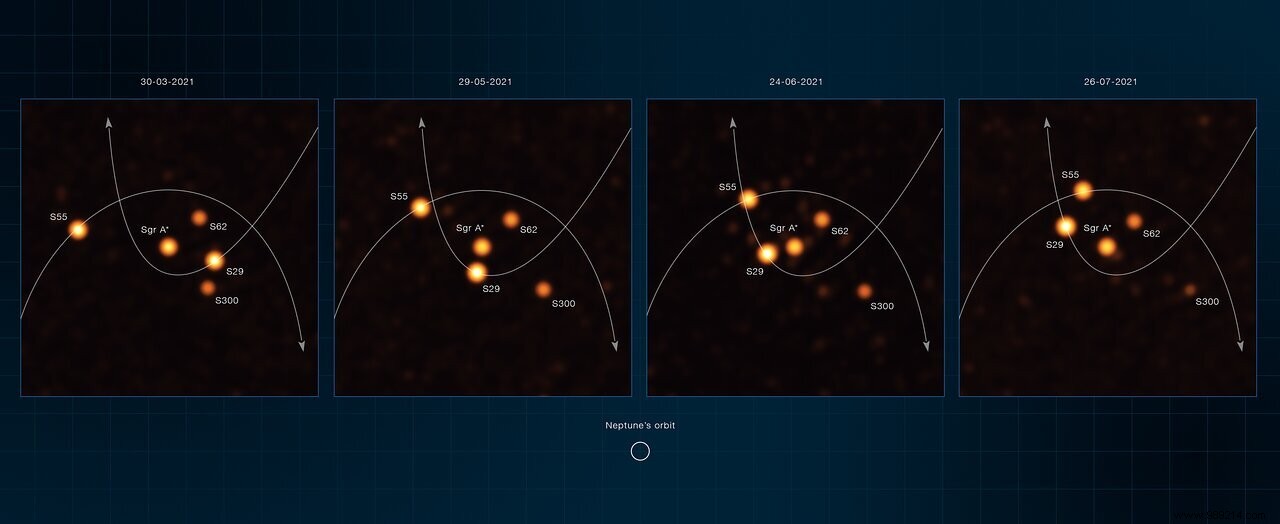Astronomers working with the Very Large Telescope Interferometer (VLTI) at the European Southern Observatory (ESO) take a fresh look at the stars closest to the Earth. supermassive black hole in our galaxy. These images zoom twenty times more than was possible before.
Astronomers have long suspected the presence of a supermassive black hole at the center of the Milky Way. Proving it wasn't easy. After all, such gravitational anomalies could also be explained by the presence of tight clusters of neutron stars, for example. Finally, all these doubts were removed in 2002 .
At the time, a team led by Reinhard Genzel of the Max Planck Institute for Extraterrestrial Physics in Germany relied on optical imaging to probe this environment particular in more detail.
This work then pointed to the presence of a tiny patch of light, a star now known as S2, passing 17 light hours from the galactic center at an astonishing speed . For comparison, this is only three times the distance between Pluto and the Sun.
For the authors, then only an object was able to accelerate a star so quickly. This object is a supermassive black hole .
Since then, Reinhard Genzel and his team have brought new evidence testifying to the presence of this cosmic ogre at the center of the Galaxy. This work earned them the Nobel Prize in Physics in 2020.
However, research on the study of the galactic center is a never-ending job. The latest work by Genzel and his team continues to expand a nearly three-decade-long study of stars in close orbit around Sagittarius A.
For this new work, the researchers relied on a new instrument called GRAVITY, available on ESO's Very Large Telescope, in Chile, to obtain the most deepest and sharpest to date from the galactic center.
In the process, the researchers made more precise measurements of previously identified stars as they approached the black hole. One of these stars is S29. In May 2021, the object would thus have approached only thirteen billion kilometers from the galactic center , or 90 times the distance from the Earth to the Sun at a speed of 8740 kilometers per second. To date, no other known star has ventured this close or this fast to Sagittarius A.
Researchers have also discovered another previously hidden one, now called S300.

These new observations also confirm that the trajectories of stars in the immediate vicinity of Sagittarius A* are exactly those predicted by Einstein's theory of general relativity.
Finally, the team was also able to make the most accurate measurement to date of the black hole's mass, now calculated at 4.3 million times that of of the Sun . Its distance from Earth has also been specified:27,000 light-years .
Later in this decade, the GRAVITY instrument will be upgraded to refine its sensitivity. In this way, astrophysicists could stumble upon fainter stars hiding perhaps even closer to the black hole. ESO's European Giant Telescope (ELT), currently under construction in Chile's Atacama Desert, will further enhance these efforts.